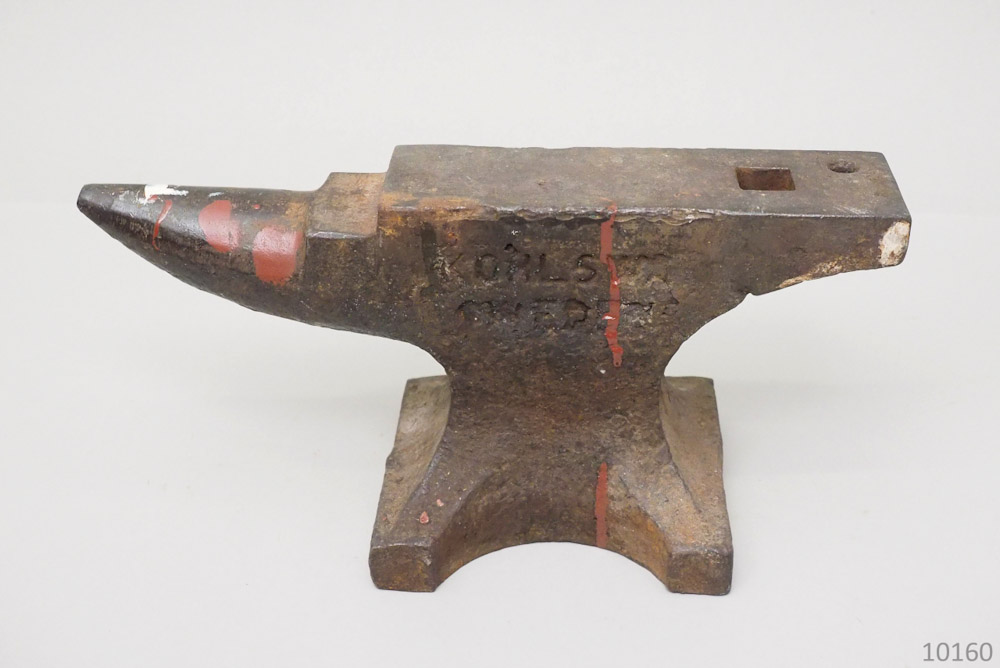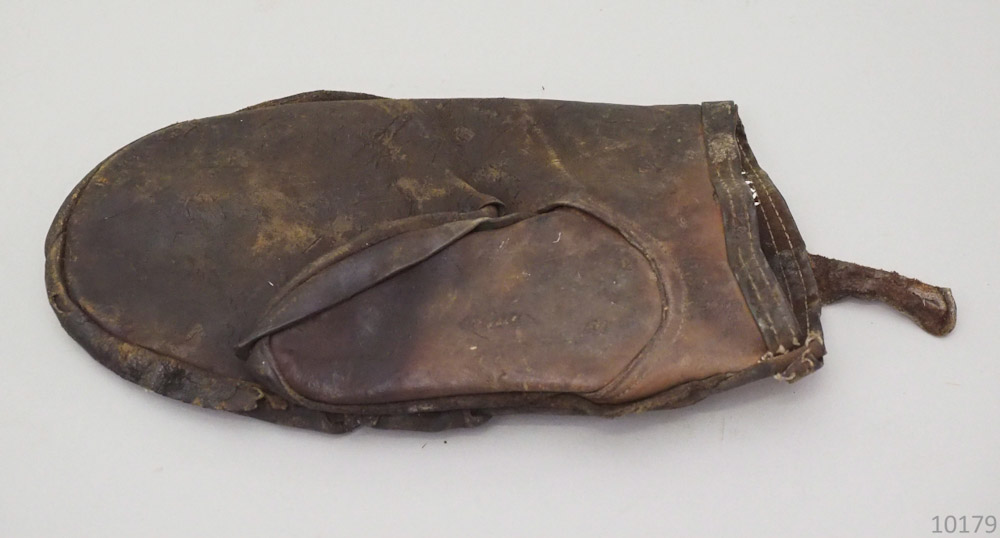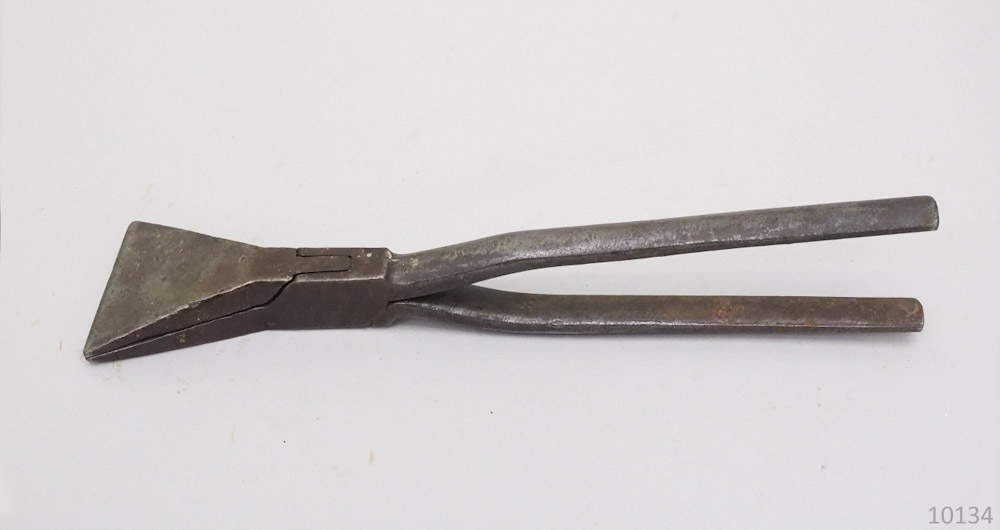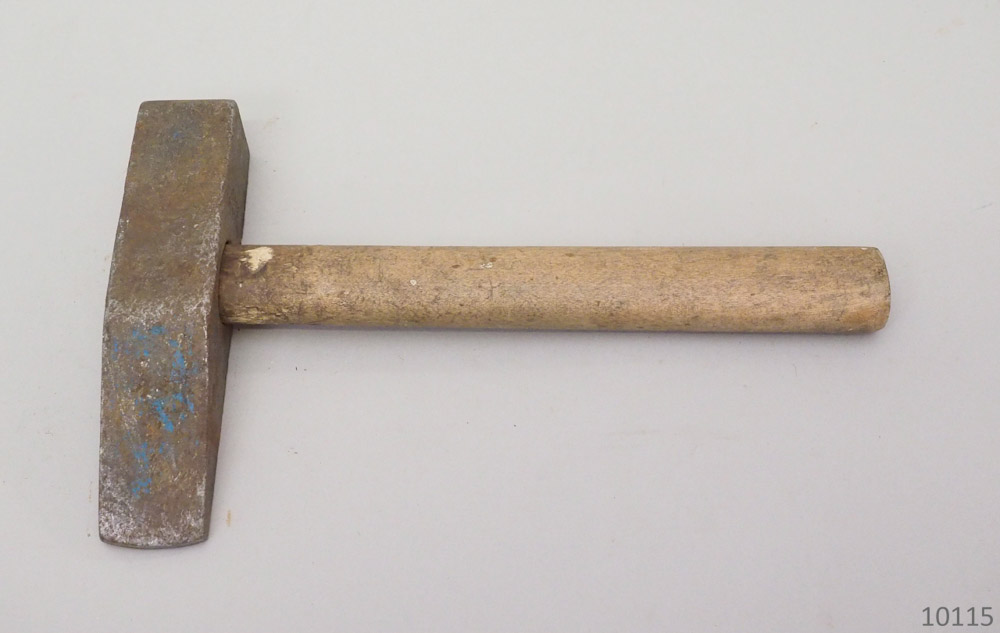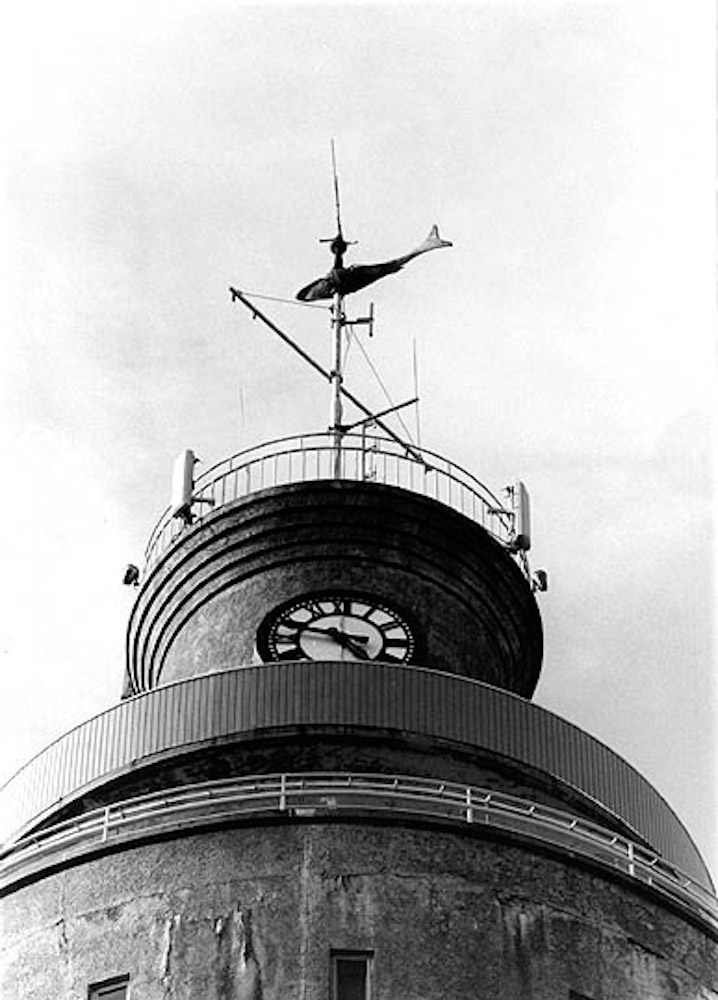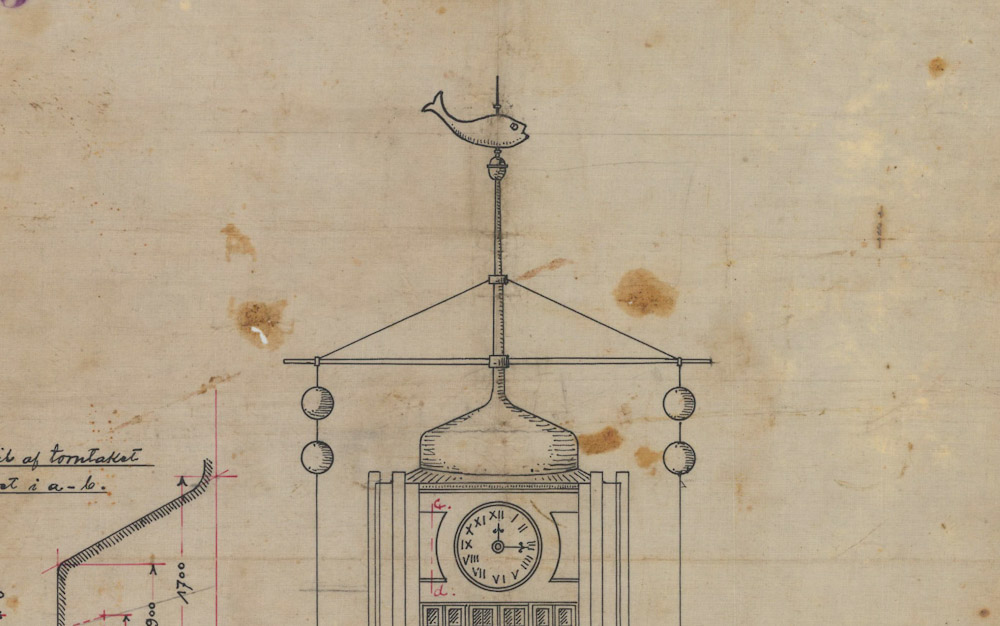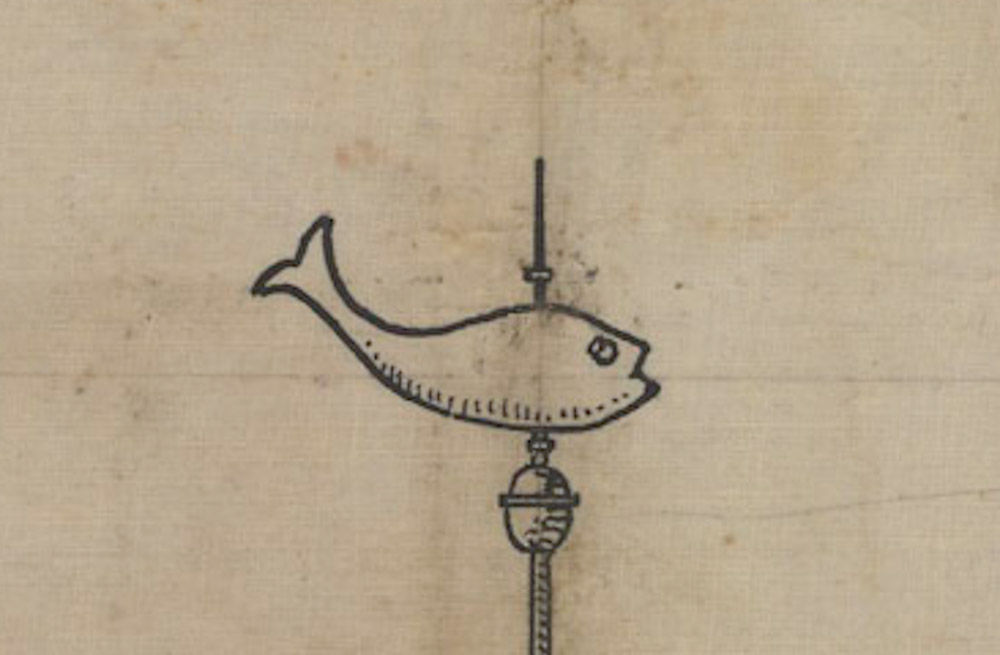
Tinsmith Einar Sandberg did many great jobs in Hanko. Among other things, he renewed the roofs of the church and powerhouse along with his sons after the war. He also made a large, 3-meter weather vane for the water tower that looks like a fish. Unfortunately, Einar suffered a cerebral hemorrhage while working on the roof of Lundell’s general store on the Esplanade. At that time he was already 80 years old and still involved in working life!
Einar Adalbert Sandberg syntyi 13. syyskuuta 1885 Järvenpään Kellokoskessa. Järvenpää sijaitsee 38 kilometriä Helsingistä ja oli siihen aikaan kylä, joka vuonna 1862 oli nähnyt Helsinki–Hämeenlinna -rautatien tulon ja nyt houkutti uusia asukkaita pienteollisuudella. Kuulostaa melkein kuin Hangolta samoihin aikoihin. Kellokoskessa sijaitsi rautaruukki.
Einarin isä, Albert Sandberg (1860–1898) oli räätäli ja kotoisin Tuusulan Mäkelästä. Suku oli asunut lähistöllä monen sukupolven ajan. Einarin äiti Amanda Eleonora Österholm (1862–1902) oli kotoisin Helsingistä. Jossain vaiheessa perhe muutti Västanfjärdiin, mutta valitettavasti Einarin vanhemmat ja isoisä kuolivat varhain. 16-vuotiaasta Einarista ja hänen sisaruksistaan huolehti luultavasti hänen isoäitinsä. Einar oli oppipoikana Lohjalla, ja myöhemmin hänestä tuli peltiseppä ja mestari Helsingissä. Einar muutti Lohjaan vuonna 1907 ja tapasi siellä tulevan vaimonsa Helmi Aina Wilhelmina Lindströmin Helsingistä (1886–1956). Kihlauksesta kerrottiin isosti isoimmissa lehdissä, ja he menivät naimisiin saman vuoden heinäkuussa. He saivat kuusi lasta.
Perhe ei jäänyt Lohjaan, vaan muutti seuraavana vuonna Hankoon, ja asuivat Wikströmin talossa sairaalan vieressä. Einar perusti peltisepänpajan yhdessä Helmin veljen kanssa, Johan Hjalmar Ferdinand Lindström (1888–1918). Hangolla oli edessään valoisa tulevaisuus, mutta pilvet kerääntyivät Euroopan ylle. Ensimmäinen maailmansota syttyi vuonna 1914, ja Einar muutti Petrogradiin (Pietari) – ehkä työn perässä. Hän palasi Hankoon sodan jälkeen ja alkoi valmistaa kaakeliuuneja. Niistä tuli hänen päätuotteensa. Einar valmisti myös syöksytorvia, räystäskouruja, peltikattoja ja tinattuja kahvipannuja.
Einar rakensi omakotitalon Niittykadulle vuonna 1924, ja pihalla sijaitsi myös hänen pajansa. Talo paloi sodan aikana, mutta se on jälleen rakennettu. Perheen pojat jatkoivat isänsä jalanjäljissä, ja pajaa laajennettiin.
Einar teki monta isoa työtä kaupungissa. Muun muassa hän uusi kirkon ja Voimakasiinin katot yhdessä poikiensa kanssa sodan jälkeen. Hän valmisti myö vesitornin ison, 3-metrisen tuuliviirin, joka näyttää kalalta. Einar sai valitettavasti aivoverenvuodon, kun hän teki töitä Lundellin sekatavarakaupan katolla Esplanaadilla. Silloin hän oli jo 80 vuotta vanha ja vielä mukana työelämässä! Vapaa-ajalla Einar oli innokas purjehtija ja oli mukana perustamassa Hangö udds segelsällskap (HUS).
Hangon museon kokoelmissa on noin 70 esinettä, jotka ovat kuuluneet Sandbergille, ja suurin osa niistä on työkaluja: erilaisia vasaroita, jakoavaimia, pihtejä ym. Esineet voivat olla peräisin sekä Einarin ajoilta että Einarin jälkeiseltä ajalta, jolloin hänen poikansa Nils jatkoi peltisepäntyötä. Museo sai lahjoituksen vuonna 2000.
Photos: Hanko museum.
Text: Linda Svennblad, museum amanuensis.


